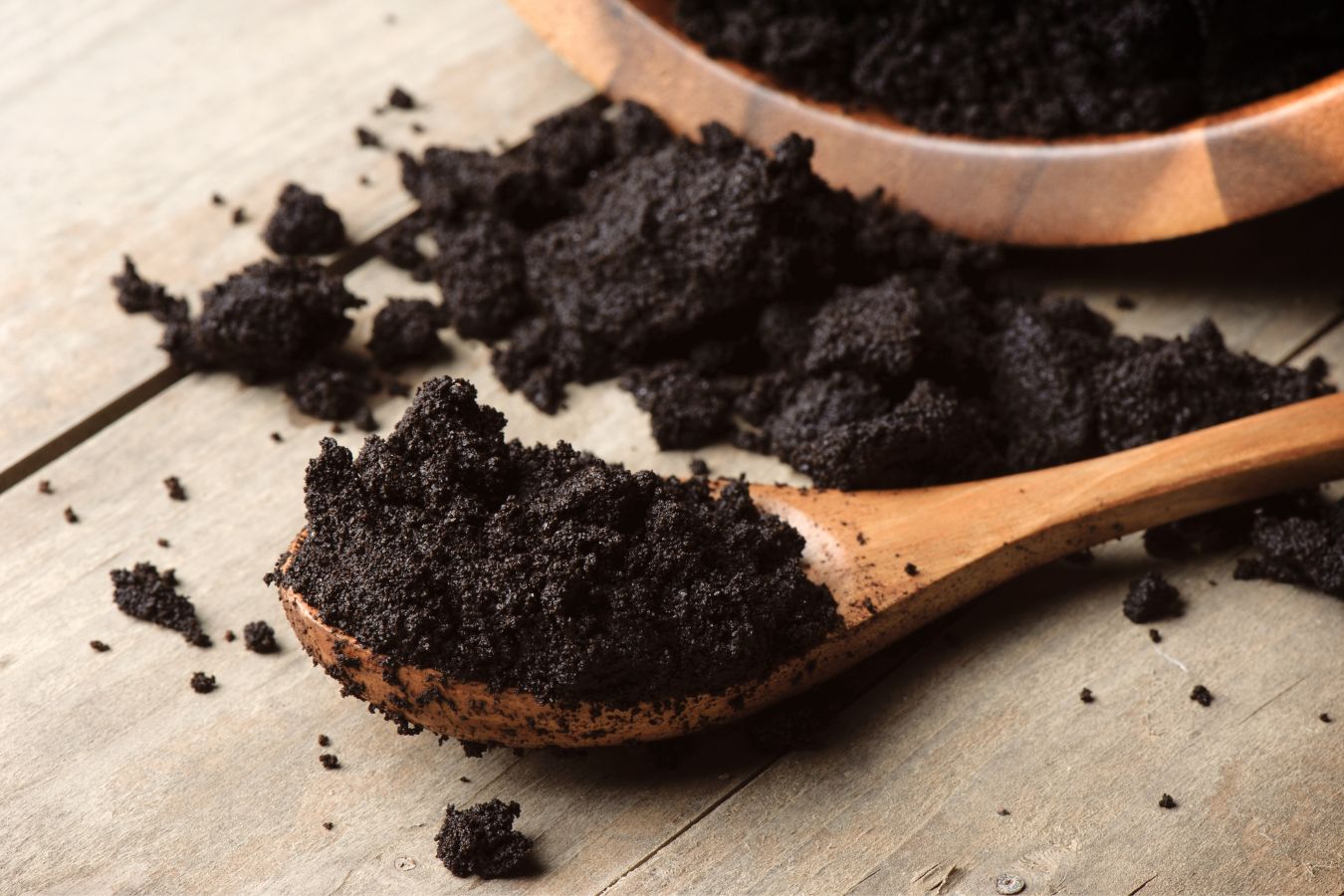
Concerning Coffee Grounds directly
What exactly are coffee grounds?
Coffee grinds, brewed coffee, or coffee powder are all utilized (ground from raw beans). This is the coffee grounds in question while brewing filter coffee and eliminating the dark brown powder inside.
However, don’t dismiss them because coffee grounds have a wide range of consequences in life, much beyond most people’s comprehension.
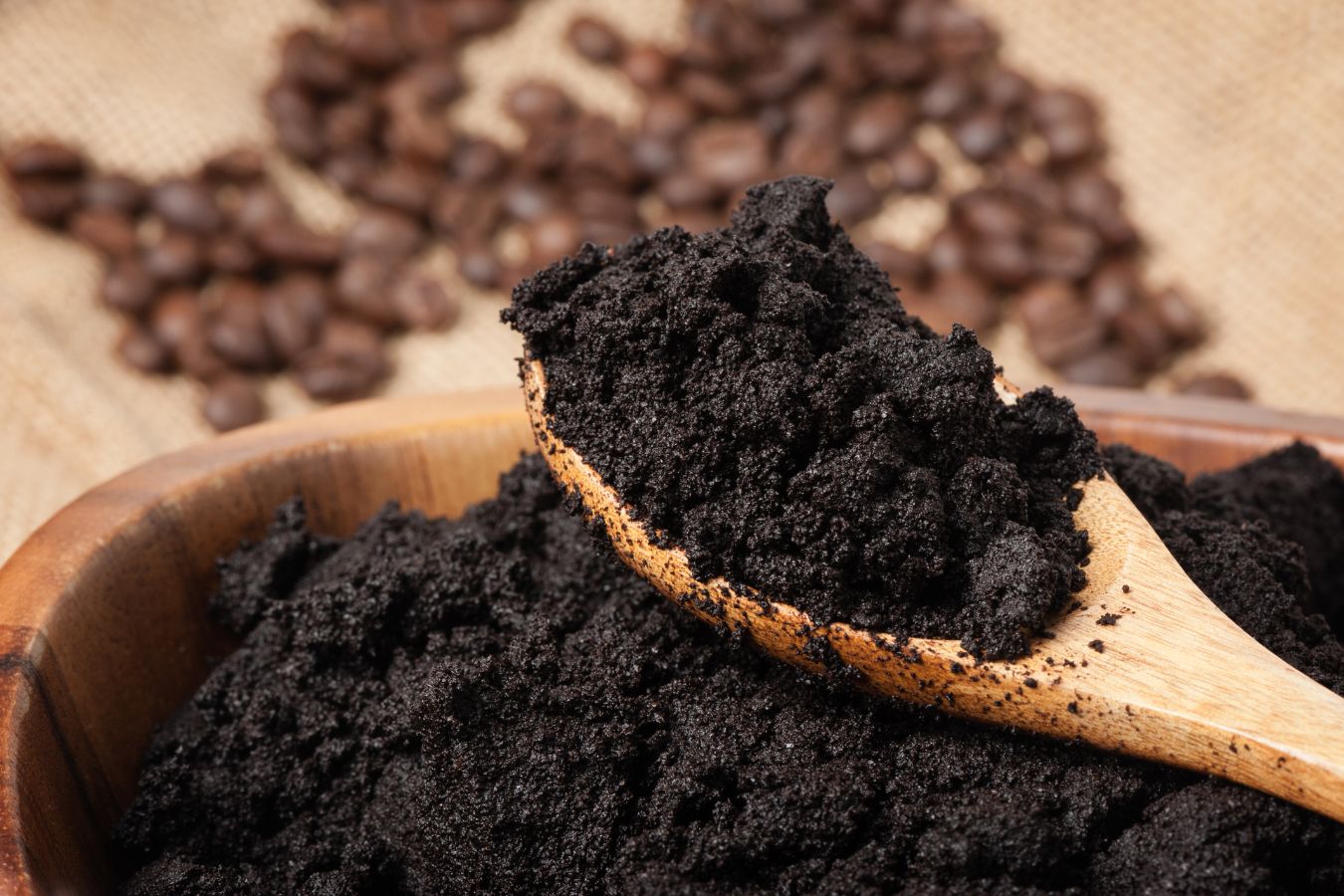
People in the United Kingdom have been using coffee grounds to make bio-bricks for house construction or as a clean fuel in pellets. They also want to create liquid gasoline from coffee grounds shortly.
Coffee grounds have the potential to change the face of the global energy industry, so it’s no surprise that they may be utilized for a variety of other things, even in everyday life.
Take note of the negative consequences of reusing coffee grinds incorrectly
Ensure the coffee you’re drinking is made from 100% pure, roasted beans. It is preferable to discard the grounds if you discover blended cornstarch, soy flour, and flavorings of unknown origin in the preliminary processing stage of the coffee beans. You should discard the ground coffee powder even if it hasn’t been brewed yet.
What is the reason for this? These coffee blends are incredibly inexpensive and contain very little actual coffee. The roasting process is unreliable, prone to burns, and contains harmful contaminants.
There is no reason to believe that the nutritional value is lesser and the hazardous elements are higher. Choosing a respected, reputable brand with numerous public quality certifications is the safest approach to avoid purchasing this type of coffee.
12 Advantages And Consequences Of Coffee Grounds
1. Use coffee grounds to exfoliate
This is one of the most straightforward answers to remember when asked what coffee grounds do for the skin. Non-irritating ingredients, a gritty texture that is fine and small enough to rub in without causing pain or itching – that’s more than enough to enjoy for no cost.
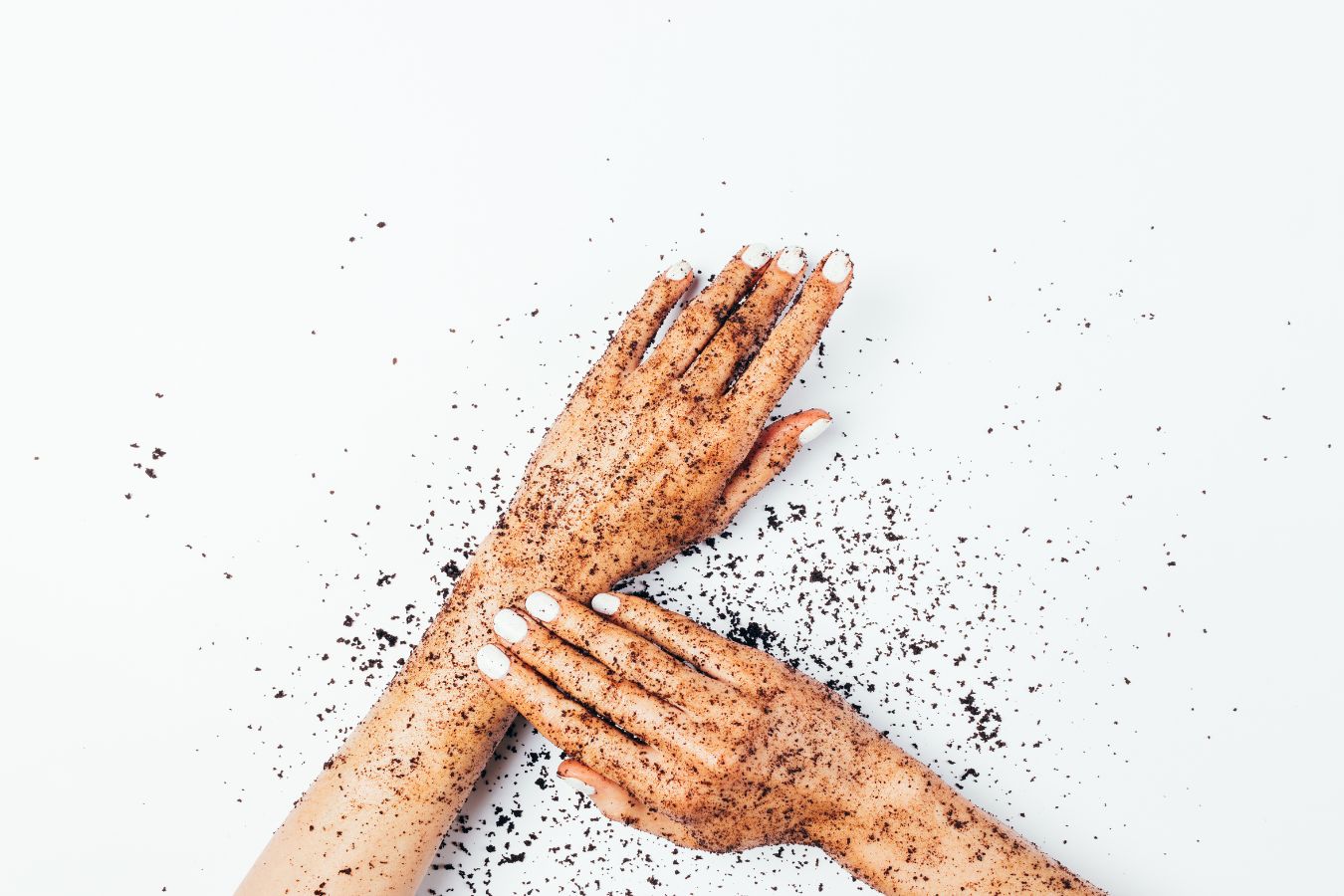
Additionally, making coffee grounds can be combined with coconut oil or honey to boost the feeling of softness and better moisturizing, which is also a highly effective manner of exfoliating with coffee.
2. Promotes hair growth and purifies the scalp
The scalp is frequently affected by beauty and hair styling products—the most noticeable increase in sebum secretion clogs the hair roots and sticks to dirt.
After all, if your hair isn’t properly cared for, its quality will suffer dramatically. Shampoo, especially if it is a potent cleansing oil that is not suitable for the body and scalp, should not be used regularly.
Coffee grounds are also viable for natural hair care products like locusts or grapefruit peel. With coffee grounds on the scalp, you speed up the exfoliation process and stimulate the potential to develop and nurture hair.
When caffeine comes into touch with the scalp, it promotes blood circulation, allowing the hair roots to absorb more nutrients and grow faster.
It is pretty simple to do: Rub a handful of clean coffee grounds around the hair roots softly and evenly, massaging in a rhythmic motion for a few minutes. Rep 1-2 times each week. You can still wash it with your regular shampoo after the massage.
3. Diminish the appearance of dark circles under the eyes
Many women’s headaches are caused by dark eye bags, making you appear moody and older than your age. Coffee grounds, surprisingly, are just as compelling as other everyday items such as cucumbers.
There is very little fatty tissue in the skin around our eyes. Thought to be healthy, this hastens the onset of indications of aging.
Although there are a variety of causes for dark circles under the eyes, the most common is poor skin care, lack of sleep, or a lack of nutrition, all of which result in decreased blood circulation in this area.
Coffee’s antioxidants and antibacterial properties continue to be beneficial in overcoming the scenario above. Not only does it assist in removing dark circles, but it also protects and limits wrinkles on the surrounding skin.
Tip: To make it easier to apply to the area around the eyes, mixing coffee grounds with coconut oil or a little warm water to make a paste.
4. Skincare and face mask
Because the coffee essence is still intact, using the original (unprocessed) coffee powder for skincare is the most acceptable option. However, if you want to save money, applying coffee grounds to your face to help your skin glow is also an excellent option.
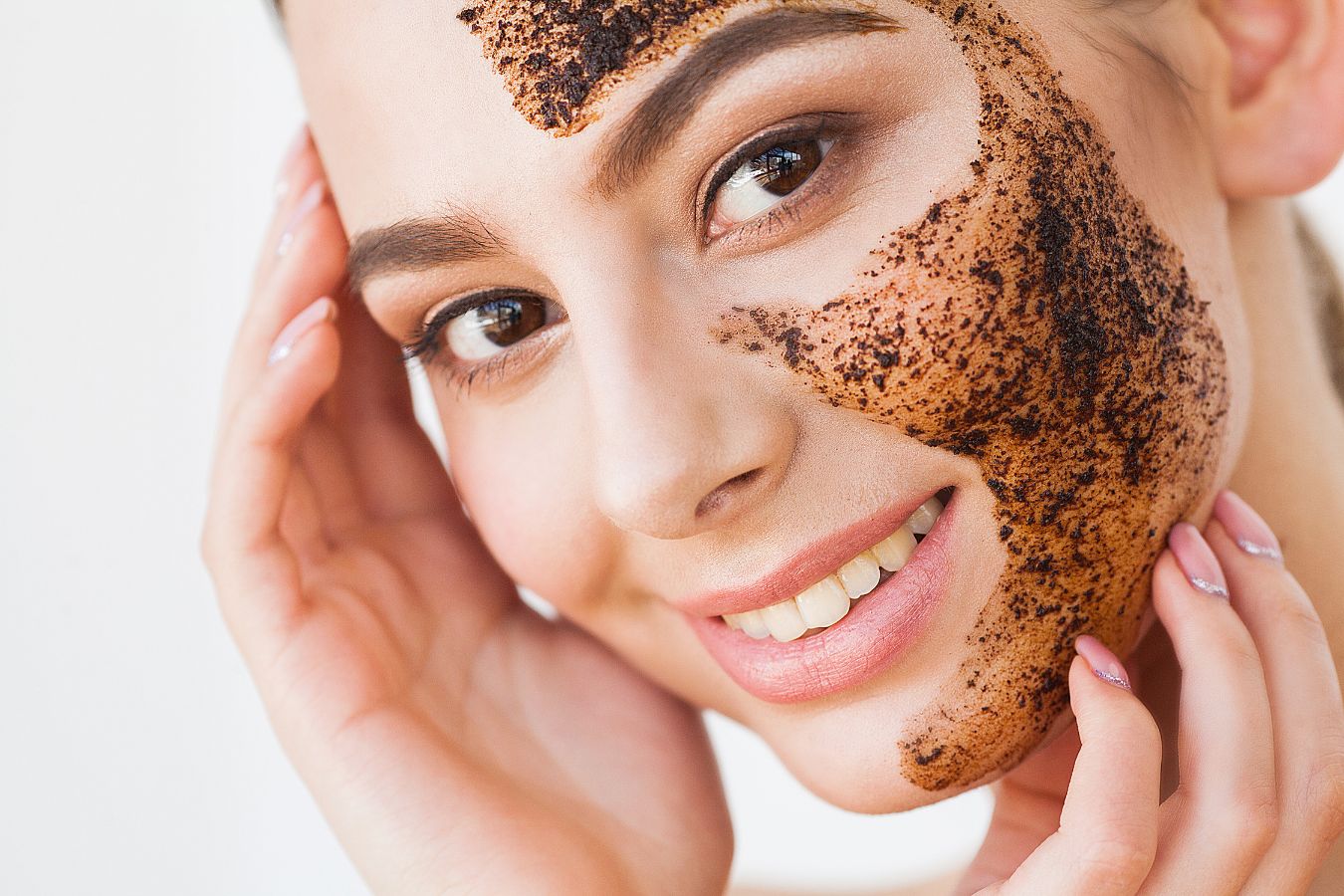
Combine the following components with fresh coffee grounds to apply to the face for the best skincare, which will considerably enhance the experience:
- Yogurt/fresh milk (unsweetened): High in vitamins C, D, and zinc, all beneficial to the skin, preventing acne, reducing dark circles and puffiness, and combating aging effects.
- Honey effectively hydrates and whitens the skin thanks to its antibacterial, antioxidant, and vitamin content. Freckles, dark spots, acne scars, and wrinkles can all be treated with this product.
- Coconut oil and olive oil: As natural substances, these two oils have similar properties to honey, such as whitening and decreasing black spots, as well as being antibacterial, anti-inflammatory, and antioxidant.
- Lemon juice: This raw fruit has a significant cleansing impact on the skin, tightening pores and brightening the complexion.
How to use coffee grounds on your face and what to look out for:
- It’s critical to check the origin and quality of coffee grounds to make sure they’re made from pure, clean, and respectable beans.
- Apply the coffee grounds mask in the evenings, 2-3 times a week, and do not overdo it. It is preferable to massage the face after application gently.
- To help develop a better consistency and adhesion to the skin, cover the face/skin combination and place it in the refrigerator for about 10 minutes before application.
- Before application, wash your skin with warm water to open pores and allow nutrients to permeate and absorb more easily. Before washing your face with cold water, lie down and rest for 10-15 minutes.
- The fresh milk and yogurt used to cover must be pure and unsweetened, free of additions and flavorings.
- Honey should be unfiltered and uncooked (learn more about coffee and raw honey in this article).
- If you have sensitive skin, you should combine lemon juice with other items such as yogurt and honey to decrease the irritating effect of the acid in the lemon.
- Coffee grounds aren’t a cure-all. When heading out in sunny and dusty conditions, you’ll still require skincare and protection goods like moisturizer and sunscreen.
5. Fertilize your plants and look after them
When people are asked what coffee grinds are used for in plants, this is one of the first things that comes to mind.
Coffee grinds can be used to fertilize plants, providing a variety of minerals such as potassium, magnesium, and calcium, all of which are good to plant growth. Many bonsai farming and trading organizations regularly utilize leftover coffee grounds to nourish their trees.
There’s no need to work hard; sprinkle the coffee grounds on the soil’s surface, and you’re done. Coffee grinds provide a pleasant aroma that attracts more earthworms to your garden. This animal is non-harmful, but it also helps improve soil quality.
In addition to minerals, coffee grounds contain a small amount of nitrogen (nitrogen). When mixed with soil and other fertilizers, the nitrogen-rich environment encourages the growth of helpful microbes, which then become nutrients for plants.
6. Repulse pesky insects
For hazardous bugs and insects, several chemicals in coffee, the most evident of which is caffeine, are regarded as “poisonous.”
Spreading coffee grinds evenly around plant beds or damp places outside the house will help to keep flies and mosquitoes at bay. This is also an excellent technique to keep pests and leaf-eating snails away from your plants.
7. Remove ticks from pet’s
Ticks on pets and cats in the home are common, owing to various complex and difficult-to-control factors. The process and cost of treating the “boss” can be excruciating if effective monitoring and prevention are not in place.
Anti-lice drugs are now available; however, they can negatively affect dogs. Coffee grinds are an excellent solution for tick prevention that is safe and effective.
This procedure is all-natural and free of harsh chemicals detrimental to cats and dogs. The process is straightforward:
- Bathing and shampooing your pet
- Coffee grounds should be mixed into shower gel, spread evenly, and rubbed into their fur and skin.
Rinse with water and usually dry. - Of course, coffee grounds are only a temporary solution for tick prevention. To be effective, you must seek the advice of a veterinarian if the tick infestation has grown severe.
Finally, don’t let your cat or dog lick or consume coffee grounds by accident. They are detrimental to the animal’s digestive system and wellbeing.
8. Get rid of stains
Coffee grounds will become your most unexpected savior if you forget to buy detergent and then confront stubborn stains.
Coffee’s antibacterial properties will promote its natural use by removing stains that are easy to attach to the surfaces of tables, mugs, bowls, and pans. This natural and safe strategy avoids the negative consequences of chemicals.
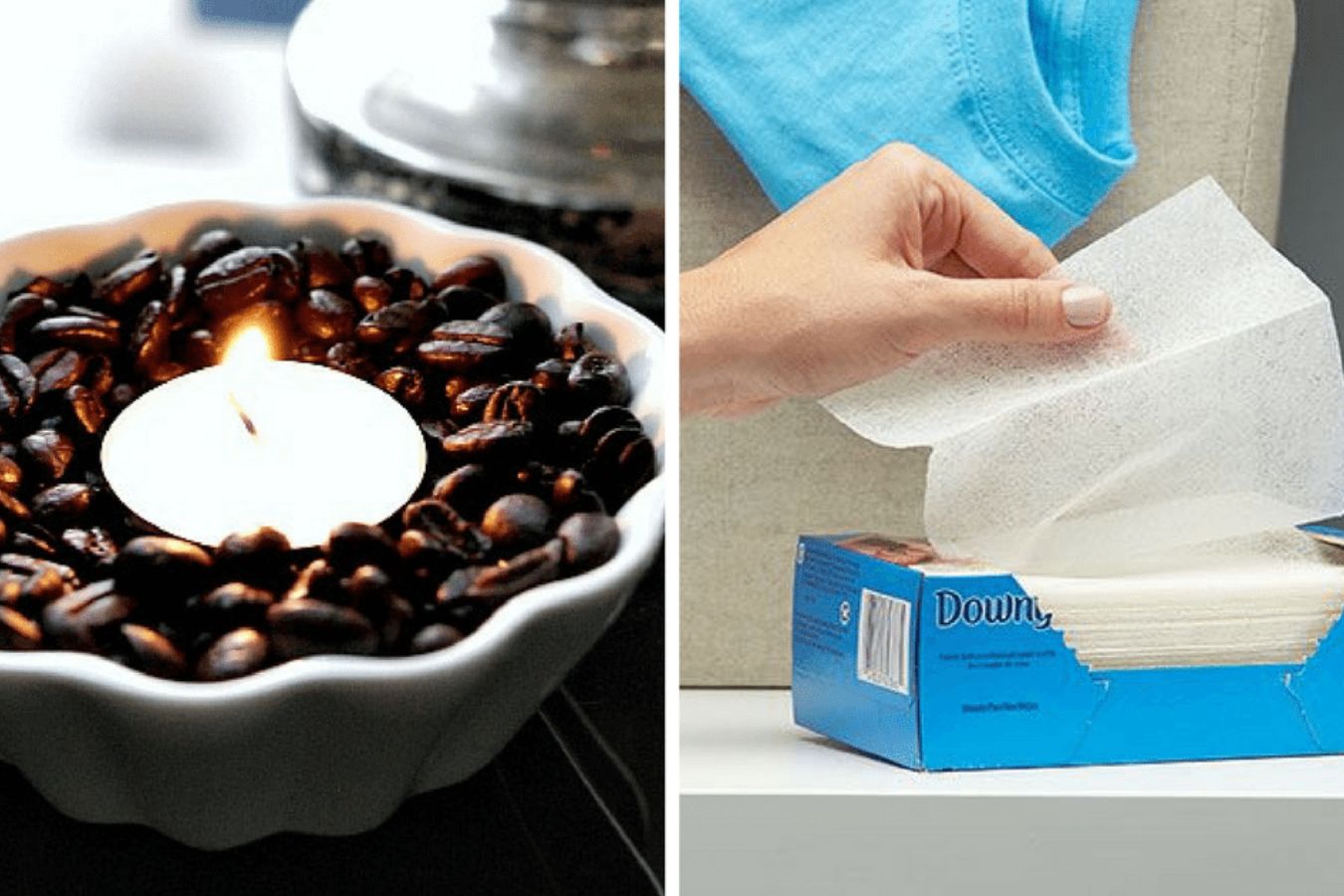
Coffee grounds should only be used to clean hard and smooth surfaces. It will leave a coffee-colored stain on a rough or soft surface, such as a doormat.
9. Get rid of scents that aren’t nice
Coffee’s nitrogen concentration has been found to have a deodorizing tangible impact. Many households still keep a dish of coffee grounds inside the refrigerator, kitchen corner, or other stench-prone areas.
Coffee grinds can also be used to improve interior air quality, making a living more enjoyable. Place the coffee grounds in a fabric bag or old socks and knot them at the top of the room’s cupboard.
However, coffee grounds can be deodorized in various places, including inside shoes, backpacks, purses, and drawers. Remember to replace it with a new layer of coffee grounds when the previous layer of coffee grounds becomes too dry and no longer helpful.
10. Natural dyes
Even though it does not fulfill many popular objectives, this approach is occasionally employed for a few little hobbies.
Coffee grounds will create a very authentic “vintage” look if you want to try recycling an old white fabric for decor. Bright colors can be applied to goods made of paper, silk, linen, etc.
Reheat the coffee grounds in hot water, then strain the water into the basin and soak the things inside.
Because of the dark tone, the approach described above can also assist in disguising long-term stains.
11. Tender Meat
Meat is made up of muscle fibers and animal protein; when not treated, it is often in a pretty raw state. So tenderizing Meat is a tiny but essential step if you want an excellent easy-to-chew dish.
Salt, enzyme catalysts, and acids are the three most common and natural ways to tenderize meat. That’s why, to make core simpler to handle, mothers often marinade it in salt before processing.
Coffee does not include salt, although it does contain enzymes and acids. As a result, this is a popular method for marinating and tenderizing Meat and enhancing the dish’s flavor.
Use Marinate Meat in coffee grounds for 2 hours before stir-frying; alternatively, marinate overnight in the refrigerator.
12. Medical waste disposal
People frequently discard medicines that are out of date or no longer required. However, this is insufficient; they must be handled with greater caution to avoid posing further hazards.
The most obvious risks of improper medicine disposal are:
- Pets and pets may dig through the trash and inadvertently swallow these pills.
- When pharmaceuticals disintegrate indiscriminately in the environment, they contaminate soil and water.
If your neighborhood lacks acceptable medical waste disposal options or you lack the skills to do so regularly, the simplest solution is to utilize coffee grounds.
First, empty the container/container of all therapeutic goods. After that, combine them with enough coffee grounds to cover them completely. Finally, before tossing anything in the garbage, place everything in a plastic bag or another container.
Many people, unfortunately, have the practice of discarding coffee grounds after each use. It’s a waste of time when you don’t know what you’re going to do with the coffee grounds or what else you can do with them.
It’s too much for such a cheap “throwaway” material to reverse aging, enhance the skin, care for plants, kill pests, and deodorize. Remember to bookmark this page so that the next time you have the opportunity to make your coffee at home, you can refer back to it and avoid wasting coffee grounds.